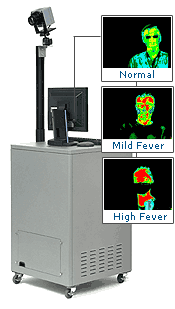Tech-take on the spread of swine flu

A public health emergency is now in place in the United States, even though the US especially, with 20 people ill, are "more prepared than ever before", according to White House officials. Spread of the swine flu, hereon in as H151, has been confirmed as the same highly virulent form of flu from Mexico, which has killed 81 people at the time of press.

By screening people at airports is one potential way of helping prevent the spread of any infection. Using a mixture of thermal imaging cameras and high powered computing powers, officials can instantly see whether people are suffering from early signs of swine flu, and isolate them into an area where they can be treated or quarantined.
With university and schooling environments, it concerns me to think of a massive number of people all from different areas, continents, demographics and regions, being a major contributor to the spread of the swine flu infection.
As the flu has already spread to New Zealand, Israel, Spain, the US and unconfirmed at time of press to Scotland, with term starting again for many people this past week and this coming week, the spread will become almost uncontrollable.
Using airport style security on campus would be inefficient and pointless; there are too many entry and exit routes, far too many buildings, and this would be entirely impractical in city-based campuses.
Ironically, mathematicians and biologists at universities around the world are working to model the spread of the infections and providing support to governments enabling them to control the spread as much as possible.
Desktop applications such as the ones above, can detect body temperature of a certain level which can then in turn alert the officer in charge of the station, to ensure the protection of other persons within the vicinity are ensured.
The panic has spread using social networking website, Twitter, which is almost unnecessary to the same degree as the Large Hadron Collider "destroying the Universe" back in September last year. Nevertheless, people have a right to be concerned and worried.
This isn't the first time such an epidemic of illnesses have been displayed in a university environment, with over 350 Cambridge University students suffering from a virulent vomiting bug, commonly known as "the norovirus", broke out earlier this year.
Here in the United Kingdom, the government is taking steps to prevent the spread of the illness, and the Home Office spoke to me a short while ago, saying they are "monitoring the situation very carefully." The BBC has full coverage (see below) and Twitter is rife with comments and worries, clearly, and even a Google Map mashup has been created to monitor the news coverage.
